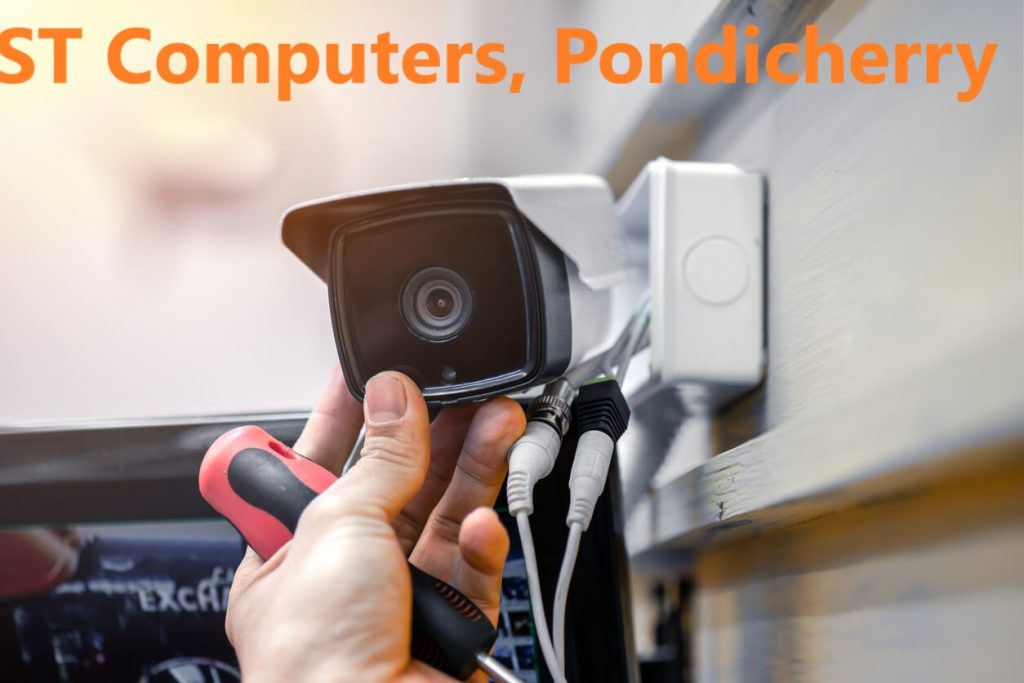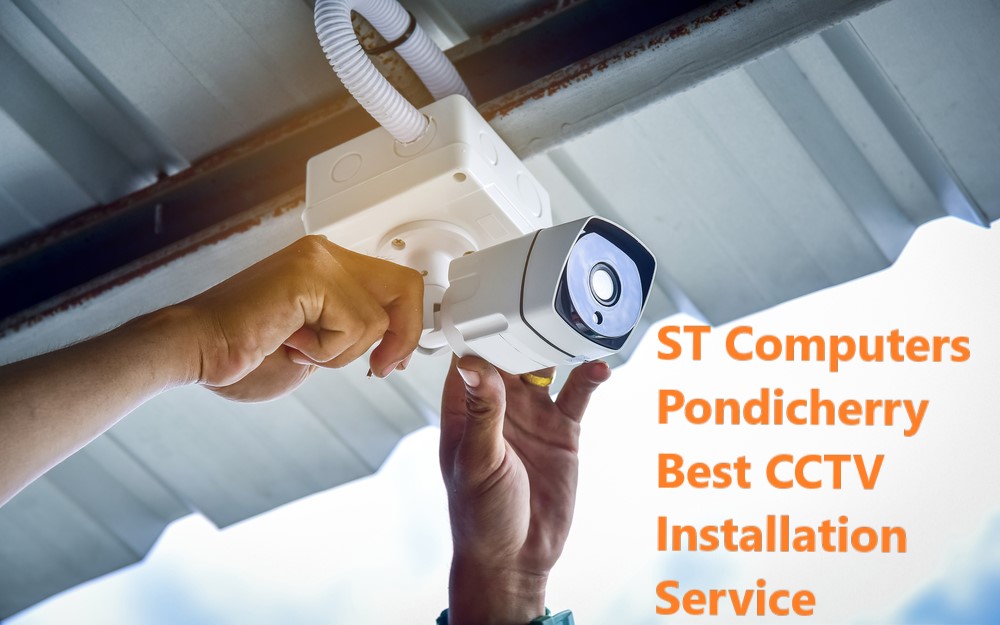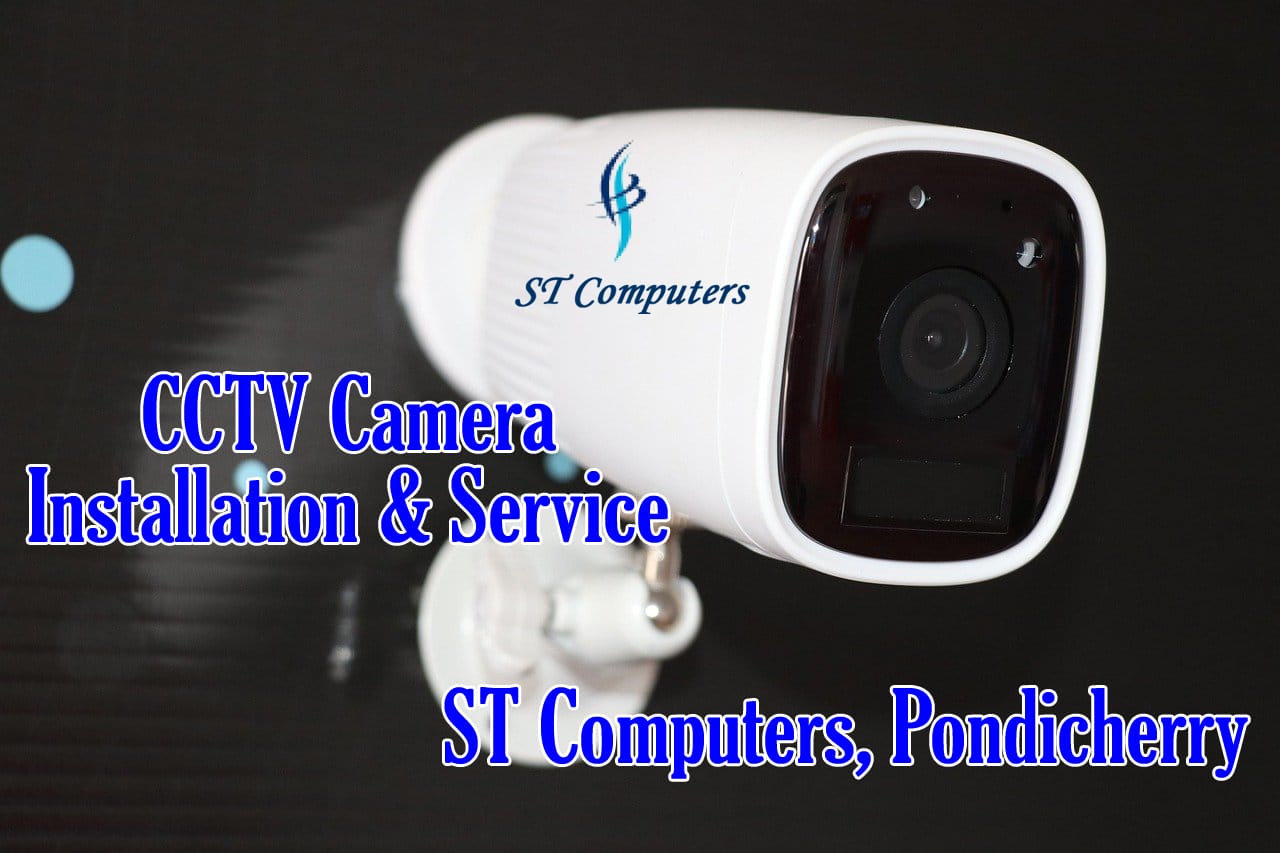home camera installation


CCTV installation has become an essential part of modern security solutions, providing round-the-clock surveillance for homes, businesses, and public places. A well-installed CCTV system helps deter crime, monitor activities, and ensure safety. In this comprehensive guide, ST Computers provides expert insights into the installation process, the necessary equipment, and best practices for setting up an efficient surveillance system.
Understanding CCTV Systems
Before diving into the installation process, it’s important to understand the key components of a CCTV system. These include:
Types of CCTV Cameras
Dome Cameras – Ideal for indoor surveillance with a discreet design.
Bullet Cameras – Best suited for outdoor use with long-range visibility.
PTZ Cameras – Allow remote control over pan, tilt, and zoom functions.
Wireless Cameras – Provide flexibility in installation without extensive wiring.
Night Vision Cameras – Essential for 24/7 monitoring in low-light conditions.
Recording and Storage Options
DVR (Digital Video Recorder): Used with analog cameras to store video footage.
NVR (Network Video Recorder): Works with IP cameras for high-resolution video storage.
Cloud Storage: Allows remote access and backup of recorded footage.
Power Supply and Connectivity
PoE (Power over Ethernet): Used for IP cameras to simplify installation.
Separate Power Adapters: Common for analog and wireless cameras.
UPS (Uninterruptible Power Supply): Ensures continuous operation during power failures.
Planning Your CCTV Installation
A well-planned installation ensures maximum coverage and effectiveness. Here’s how ST Computers recommends preparing for a successful setup:
1. Identify Surveillance Areas
Determine key locations such as entry points, driveways, hallways, and parking lots.
Consider blind spots that may require additional cameras.
2. Choose Camera Placement
Mount cameras at a high vantage point to cover a wider area.
Avoid placing cameras directly facing bright light sources to prevent glare.
Ensure outdoor cameras are weatherproof and have adequate protection from harsh conditions.
3. Determine the Number of Cameras Needed
Conduct a site survey to assess how many cameras are required for full coverage.
Consider both indoor and outdoor surveillance needs.
Step-by-Step CCTV Installation Guide
Once the planning is complete, follow these steps to install your CCTV system:
Step 1: Gather Required Tools and Equipment
CCTV cameras and mounting brackets
DVR/NVR unit
Power supply and cables
Drill and screws for mounting
Monitor for viewing the feed
Step 2: Install the Cameras
Mark Camera Locations: Use a pencil to mark drilling spots.
Drill and Secure Mounts: Fix the camera brackets securely.
Position the Cameras: Adjust angles to ensure optimal coverage.
Step 3: Run Cables and Connections
Use conduits to protect wiring from damage.
Route cables along walls and ceilings neatly.
Connect power cables and video transmission cables properly.
Step 4: Connect Cameras to DVR/NVR
For analog cameras, use coaxial cables to connect them to the DVR.
For IP cameras, use Ethernet cables to link them to the NVR.
For wireless cameras, ensure they are synced with the network.
Step 5: Power Up and Configure the System
Plug in all power sources and turn on the system.
Connect the DVR/NVR to a monitor to view live feeds.
Configure motion detection, recording schedules, and user access settings.
Step 6: Test and Adjust
Check all camera feeds to ensure they are capturing the intended areas.
Make necessary adjustments to angles and zoom settings.
Test night vision and motion detection functions.
Maintenance and Troubleshooting
Regular maintenance ensures your CCTV system functions effectively. ST Computers recommends the following:
Routine Maintenance
Clean camera lenses periodically to maintain clear images.
Check cables and power connections for wear and tear.
Update firmware and software to keep the system secure.
Troubleshooting Common Issues
No Video Feed: Ensure proper power supply and cable connections.
Blurry Images: Adjust the focus and clean the camera lens.
Interference or Static: Check for loose connections or signal disruptions.
Benefits of CCTV Installation
Investing in a high-quality CCTV system offers numerous advantages:
Crime Prevention: Acts as a deterrent against theft and vandalism.
Remote Monitoring: Allows real-time access via mobile devices.
Legal Evidence: Provides crucial video footage in case of disputes or incidents.
Improved Workplace Productivity: Enhances employee monitoring and security.
Insurance Benefits: Some insurers offer discounts for properties with CCTV systems.
Conclusion
CCTV installation is a crucial step in ensuring the safety and security of your property. By choosing the right cameras, planning strategic placements, and following proper installation procedures, you can maximize surveillance efficiency. ST Computers specializes in professional CCTV installation services, ensuring seamless setup and reliable monitoring solutions. Investing in a robust CCTV system offers long-term security and peace of mind for both residential and commercial properties.
Kyocera Printer Service
Kyocera Printer Service Kyocera Printer service center in Pondicherry. This is one of the top most Printer manufacturing company in global. They sell laser and
CCTV installation services
CCTV installation services Security concerns are at an all-time high, making CCTV installation services essential for homes, businesses, and public spaces. A professionally installed CCTV
Toshiba laptop service
TOSHIBA Laptop Service TOSHIBA Laptop service center in Pondicherry. It is Green Product Provider. The user who own TOSHIBA PC or Laptop and are searching
Laptop System Motherboard service
Laptop System Motherboard service Laptop system motherboard service in pondicherry ST Computers. The motherboard is the brain of our Computer system. It contains all connections
All TV Services
ALL TV Services in Pondicherry All TV Services in pondicherry, Cuddalore, Thindivanam. Almost all the home having LED TV. Sometime it may get repaired. We
